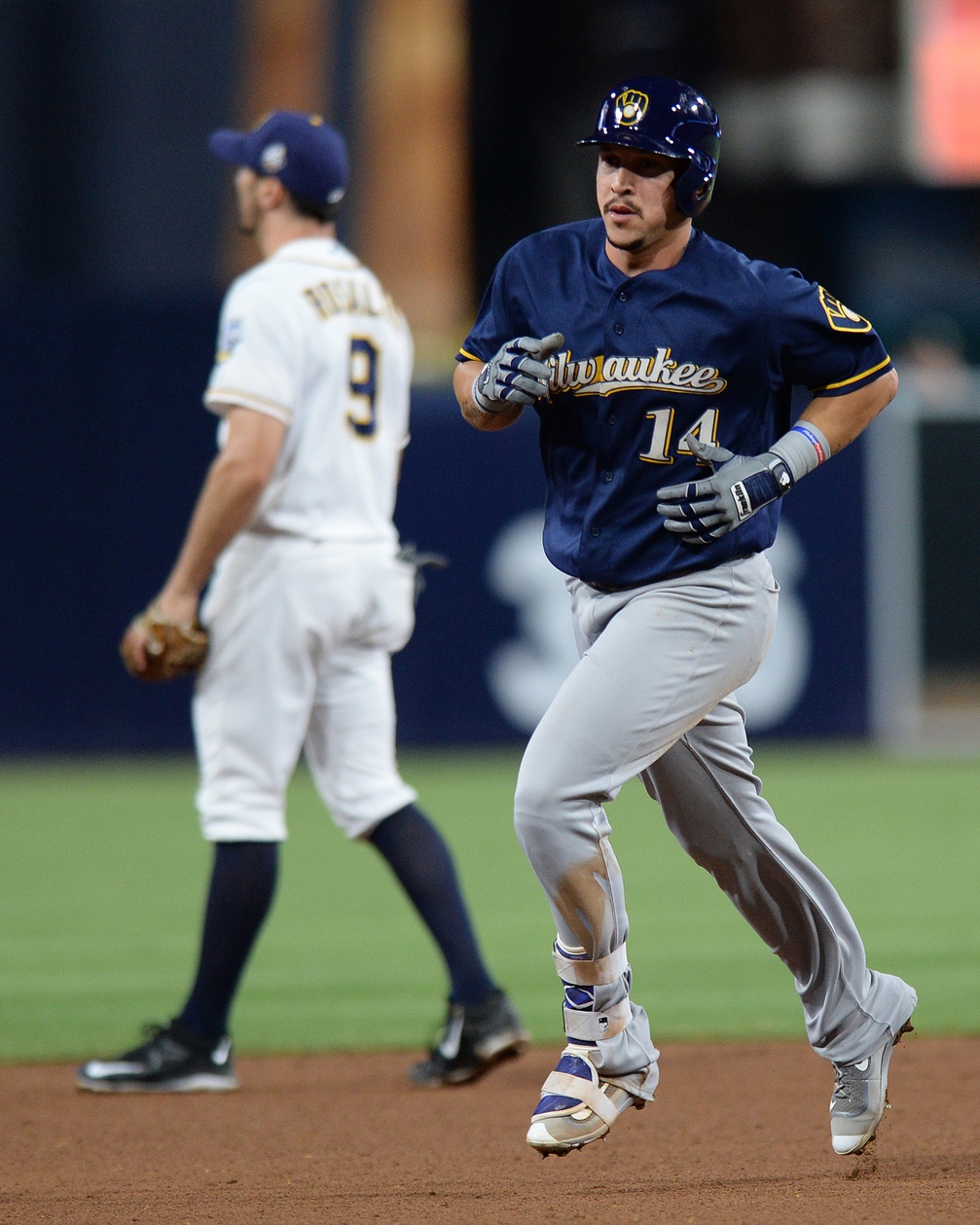Is it good for a rebuilding club to be lucky, or unlucky? I’ve mused on the subject before, and I keep coming back to it because I don’t see a clear answer. On the one hand, a lucky team wins more games. On the other hand, well, an unlucky team loses more games. The former path brings more short-term joy; the latter, more long-term joy (theoretically). It’s a tough choice that fans have to decide for themselves, and one that the Brewers might have made for them.
After a 2015 campaign in which the Brewers offense bottomed out — their .251 TAv beat only the White Sox (.247) and the Twins (.248) — 2016 has brought some much-needed competency. Milwaukee hasn’t clobbered its opponents, but it has improved its batting line from .251/.307/.393 to .249/.328/.401. As the result, the Brewers’ current .262 TAv ranks a more respectable 21st in the majors.
That mark, however, hasn’t translated to as many runs as you’d think. FanGraphs tracks an expected record called BaseRuns, which looks at a team’s peripheral metrics to estimate how many runs they should have scored and allowed. In the eyes of this measure, Milwaukee has seriously underperformed on offense, to an extent that rivals only New York and Tampa Bay:
| Rank | Team | RS/G | RS/G | Diff |
|---|---|---|---|---|
| 1 | Mets | 3.67 | 4.05 | 0.38 |
| 2 | Rays | 4.02 | 4.32 | 0.30 |
| 3 | Brewers | 4.12 | 4.35 | 0.23 |
| 4 | Diamondbacks | 4.46 | 4.65 | 0.19 |
| 5 | Marlins | 4.27 | 4.44 | 0.17 |
Over their 113 games this season, the Brewers have crossed the plate 465 times. According to BaseRuns, they should have done so 492 times. That 27-run difference amounts to roughly three wins — in other words, if the Brewers had scored like BaseRuns has said they should, they would have a 54-59 record instead of 51-62. That three-game swing is nothing to turn up your nose at; nor, for that matter, are the peculiar circumstances underlying it.
The problem doesn’t appear to lie in baserunning (the Brewers rank 18th in the majors with -0.8 Baserunning Runs) or in double plays (their 11.1 percent Double-Play rate is the 13th-best in baseball). Rather, Milwaukee batters have just done worse with runners on base. Recall their aforementioned .249/.328/.401 triple-slash for the 2016 campaign? After someone has reached base, their performance has declined to .240/.328/.379. That means they’ve hit six percent worse with runners on base than they have overall; via the Play Index, that’s the 35th-biggest disparity ever.
So the Brewers don’t have what you might call clutch hitting, which is weird in and of itself. On a peripheral level, the weirdness gets deeper — their plate discipline has gotten a lot better with men on base, but they haven’t supplemented that with enough hits:
| Situation | uBB% | K% | BABIP | ISO |
|---|---|---|---|---|
| BE | 9.2% | 25.9% | .324 | .162 |
| MoB | 10.2% | 24.4% | .301 | .139 |
FG’s contact quality metrics back this up. With the bases empty, Milwaukee has hit the ball hard 34.3 percent of the time, which slots them fifth in the major leagues. With men on base, that figure has dipped to 30.4 percent, dropping them to 17th. Still, I see no reason why the Brewers shouldn’t square the ball up when they need to. They certainly remain as patient, so it’s not as though they press and swing at bad pitches. As far as unlucky results go, you won’t find many that can top this one.
Simply calling a fluke a fluke doesn’t undo it, though — nothing does. The Brewers won’t get back those 27 runs, or those three wins. The question is, does that matter for the rest of us? Would we prefer a team that’s more respectable in 2016, or a team that drafts higher in 2017? This query, again, has no right or wrong answer. At the end of the day, we all want to see a successful Milwaukee club, at one point or another. Hopefully, that club will start to bring its runners around.
